ISSUE NO. 28: DUE DILIGENCE FOR M&A IN THE TIME OF COVID – OVERCOMING RESTRICTIONS TO RELIABLY IDENTIFY AND REPORT RISKS
Conclusion of the U.S. election and the promise of widespread COVID 19 vaccines and treatments after months of global disruption may nudge cash investments off the sidelines and deploy for merger and acquisition (M&A) activity. At the same time, one legacy of the 2020 Pandemic is increased focus on companies’ social and environmental performance, thus increased scrutiny by stakeholders, especially investors. This means that the requisite social (“S”) and environmental (“E”) due diligence prior to an acquisition takes on heightened significance than previously.
Increased scrutiny on “E” & “S” risks, coupled with the realities of travel in a pandemic world present new challenges for an investigating company. Assuring that vital risks are understood and managed as part of M&A due diligence requires on-the-ground asset visits, especially if the proposed transaction involves real property. But traveling to sites is often unfeasible, especially in parts of the world with travel restrictions. How do we manage this conflict?

Below we’ve carved out three possible paths to solving this challenge, with corresponding pros and cons.
1. SKIP OR DELAY ENVIRONMENTAL AND SOCIAL DUE DILIGENCE
Investors may choose to take on risk and make an exception of conducting meaningful “E” & “S” due diligence. It may be that travel and local restrictions make a site visit impossible and a risk/reward analysis points in favor of going ahead with a transaction.
Skipping the investigation could only be considered for sites or facilities with an anticipated low risk of adverse impacts arising from current or planned activities. In other cases, where adverse risk levels may be higher, investors may choose to delay the ESG and other elements of diligence until it is safe to visit – say, late 2021 or 2022 – and negotiate covenants in the purchase contract allowing for renegotiation if the later diligence reveals environmental and social risks not previously identified.
Pros:
- Allows deals to proceed without delay
- Avoids health risks and operational disruption for non-essential activities
- Defers travel-related expenses
Cons:
- Exposes investor to potentially material unidentified environmental and risks that can’t be successfully renegotiated post-closing
- Limits current management assessment along with practices and systems of the facility
- May require exception approval to environmental and social due diligence standards which could then erode of credibility in a management change
- May not be acceptable to financial backers, bankers or investors
2. REMOTE DUE DILIGENCE
With less social and environmental risk tolerance than above, one could perform remote due diligence by relying on Virtual Data Room (VDR) document reviews, often coupled with remotely conducted interviews.
Qualified experts can make the best use possible of existing documents and asset manager interviews to evaluate social and environmental risks and educated assessments about their significance. But not being able to visit the asset to verify the information provided in the virtual data room (VDR) leaves critical holes in the level of assurance provided. Under some limited circumstances, it might be possible to obtain current imagery of a facility by the use of aerial photography, either by aircraft or drone. Again, you can insert post-closing covenants and escrows, depending on whether you are confident in renegotiation possibilities post-closing.
Pros:
- Allows deals to proceed with little delay
- Avoids health risks and operational disruption for non-essential activities
- Avoids travel-related expenses
Cons:
- Exposes investor to potentially material risks that may not be adequately investigated / seen
- May require an exception to ESG due diligence standard (and thus erosion of the credibility and rigor of that standard)
- Limits the ability to assess current management, practices, and systems of the facility (if relevant)
- Time and expense for aerial imagery
- May not be acceptable to the external financing provider(s)
Recently, we used this approach to conduct ESG due diligence assessments of a mine in Panama and a resort in the Dominican Republic during pandemic travel lock-downs in each country, in each case giving our clients a quick view of liabilities that will require further review if they decide to proceed with the deals.
In another case, our client had relied on site maps of a fuel terminal that were closely cropped to show just the facility in performing initial due diligence. In our follow-up visit, a walk around the facility showed residences and small businesses separated from the facility only by the width of a regular city street. This would have been missed had we not had the opportunity to actually observe the setting.
3. ON-THE-GROUND SOLUTIONS
In many cases, investors can proceed with robust environmental and social due diligence including on-the-ground assessment by engaging a qualified expert that combines global expertise with a network of reliable, in-country experts. However, it is important that you vet the experience of that team. It’s one thing for a consultant to have a loosely affiliated network and another that these experts have previously worked together and often.
Pros:
- Reliable results based on both assurance that international standards are followed and on-the-ground assessment is applied
- High level of assurance that environmental and social risks are understood and managed, and that material risks are identified upfront
- Allows observation of current management, practices, and systems of the facility
- Likely the most acceptable approach for potential transaction financing entities
Cons:
- Health risks to local specialists and site personnel need to be managed through careful health & safety screening and planning
- Travel schedules and expenses need to be budgeted
During the restrictions of the pandemic, we’ve used this approach to conduct due diligence on an ethanol plant in Mexico, oil fields in Guyana, Senegal, and Brasil, and a renewable energy development in Argentina. These are all operations in high-risk environments that required more comprehensive, in-person due diligence. The transactions were extremely critical to the acquirers’ business plans, as well.
CLOSING STATEMENTS
The Covid-19 pandemic travel and face to face meeting restrictions have complicated traditional approaches to ESG due diligence, forcing consultants to find new approaches to help investors understand these important risks prior to M&A transactions. Conducting on-site visits in addition to VDR review and interviews (per ASTM and other standard practice guidance) remains most likely approach to identify potentially significant or material risks that might be associated with the proposed transaction. But if this is not a viable method while travel restrictions continue, a high-level screening, based on publically and perhaps some confidentially provided information could help guide the approach to be taken.
In the end, it’s important to understand that one size does not fit all. The approach applied for ESG due diligence during the pandemic should be fit-for-purpose considering the risks inherent in the operations, environment, and transaction.
During this pandemic, Acorn International has been able to deliver comprehensive, on-site ESG due diligence worldwide by leveraging our strong network of qualified in-country partners in >70 countries. In doing so, we provide a qualified set of eyes and ears to direct on-the-ground due diligence, provide assurance that international lender standards and met, and translate findings into terms that support sound, risk-based investment decisions.
News & Notes

Acorn International
1702 Taylor St, Suite 200B
Houston, TX 77007, USA
1213 Purchase St
New Bedford, MA 02740, USA
